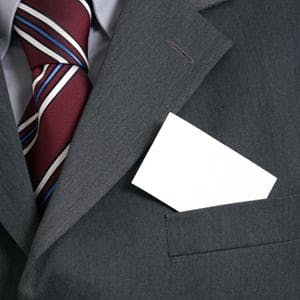An ingenious French invention, the honoured ritual of exchanging business cards has been a norm of business – almost like a handshake. This custom is indeed a convenient and practical way for people to not only exchange information but also break the ice. But now in the age of the cloud and social media which have permeated almost all aspects of people’s lives, does it still make sense to still use the business card?
Many times before people meet up face to face they have already exchanged information through email and electronic signatures.
Business card exchange through smartphones
With the proliferation of iPhone, Android and Windows Phone devices, it is already easy to exchange contact information. There are even mobile applications that allow users to transfer information through a simple phone “bump”. The bump technology, launched March 2009 had been originally designed with the intent of enabling professionals to exchange information over Wi-Fi by lightly “bumping” their smart phones together. Now with over 53 million users, it has been widely used primarily as a cool social networking tool. The impending release of Windows Phone 8 with Near-Field Communications (NFC) will allow you to scan contact information from a business card containing a NFC chip.
Business card exchange through LinkedIn
When LinkedIn acquired CardMunch in 2011, it was able to easily gather information and display it on a business-card like form on its site. CardMunch co-founder Sid Viswanathan expressed that unlike traditional business cards which are flat and one-dimensional, CardMunch provides a way to create a digital version of it that can be connected to the internet, more particularly LinkedIn’s vast network of resume. In this way, the business card serves as a window to a full resume allowing people to learn more about the person who owns the “card”. Features like the Outlook Social Connector and LinkedIn plugin allow you to see more information from the person on the other end of the email, simply by looking them up in the background. This also presents the user with the option of adding the other contact to LinkedIn with a simple click.
Business card Emerging Technologies
There is a sure lot of technology players each giving their own unique twist to business cards. For instance, DUBLabs and Cardcloud enables users to create their custom cards using their cloud-based tool; and send it to others using email. Flavors on the other hand, makes you collect social profiles and transform them to virtual business cards that can be easily updated through a user name input. Others take the notion of electronic business cards literally like Cardolution – a business card which takes a credit card form enabling users to capture information through RFID technology. Contact details through Cardolution can be easily read and transferred through a simple push button to users Outlook or even be saved directly to one’s smart phones.
In Defence of the Old Trade
Chief executive officer of Moo.com – a leading player in online business card printing says that business cards still remain to be a powerful networking too because of a simple reason – everyone in the world understands them. Moo.com provides businesses more exciting and creative ways to form customizable cards in small batches. Through modern printing and rise of small entrepreneurial businesses, the value proposition of Moo.com is indeed strong. In 2011 alone, it printed 50 million business cards in London and Rhode Island; and is expecting a 100 percent increase in sales this year.
Although technology is in the process of not only enhancing but also slowly replacing the way people communicate, it is still worthy to note that traditional business cards for most people are more than just information exchange – it is a sort of ritual, an interaction that allows people to create a bold statement, express personality or even flirt. People’s way of communicating indeed changes, but the question of replacing business cards in its entirety is still a question we’re yet to see answered.

